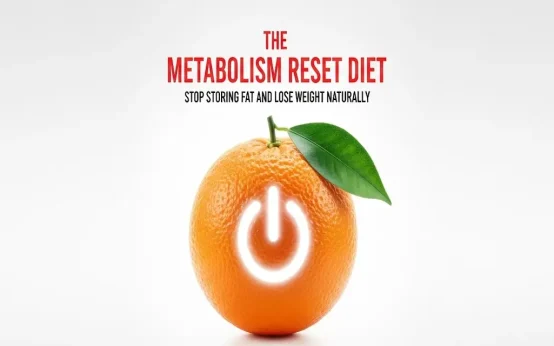Anyone who desires to improve their health, fitness, or overall well-being needs to know about body composition. Many people only care about their weight and fat percentages, but the amount of muscle in your body can have a big impact on your health, metabolism, and physical performance.
Understanding Body Composition
The amount of fat, muscle, bone, and water in your body is called your body composition. The number on the scale only tells you a rough idea of your weight. It doesn’t tell you everything about your health. If you want to gain muscle mass, you need to know that muscle is denser than fat. So, someone with more muscle mass could weigh more, but their body is leaner and healthier than someone with more body fat.
- Muscles: These are the skeletal muscles, the cardiac muscles (heart), and the smooth muscles that line the inside of our bodies.
- Fat: visceral fat (around organs) and subcutaneous fat (under the skin).
- Bones: The structure of the skeleton.
- Water: Most of our body weight is made up of water, which is necessary for many bodily functions.
Factors Affecting Muscle Percentage
Gender
Men grow to have a higher percentage of muscle mass than women. This is mostly because testosterone is a hormone that makes muscles grow. For men, muscle mass makes up about 40 to 50 percent of their body weight, while for women, it’s about 30 to 40 percent. On average, women have higher fat percentages than men. This is mostly because of biological differences that have to do with reproduction.
Age
Sarcopenia is the term for the natural loss of muscle mass that comes with getting older. People can lose about 3 to 8 percent of their muscle mass every ten years after the age of 30. Once you turn 60, this rate goes up. This loss can be slowed down by doing a lot of exercise, especially strength training.
Genetics
The amount of muscle you can build and keep up depends a lot on your genes. Because of their genes, some people naturally have a higher percentage of muscle mass. In general, it’s easier for people with the mesomorph body type to build muscle than for people with the ectomorph or endomorph body type.
Activity Level
How much you work out has a direct effect on how much muscle you have. Regular exercisers, especially those who do high-intensity interval training (HIIT) or resistance training, tend to have more muscle mass than people who don’t do any exercise. By causing tiny tears in muscle fibers, exercise makes muscles grow. The muscle fibers then heal and get stronger.
How To Measure Muscle Mass
Body Fat Scales
Most body fat scales use bioelectrical impedance analysis (BIA) to figure out how much fat and muscle a person has. A small amount of electricity flows through the body to measure the resistance. These scales can figure out how much muscle someone has because muscle conducts electricity better than fat. But these scales may not be accurate if you aren’t drinking enough water or eating at the right time, among other things.
DEXA Scans
The Dual-Energy X-ray Absorptiometry (DEXA) scan is a more accurate way to find out how much muscle you have. Low-level X-rays are used in this test to scan the body and make clear pictures of bone density, fat, and lean muscle mass. People think it’s one of the most accurate ways to find out how much muscle you have, but it can be pricey and not always easy to get.
Skinfold Calipers And Hydrostatic Weighing
Skinfold calipers find subcutaneous fat in different places on the body to get an idea of body fat percentage. This gives you an indirect idea of muscle mass. Hydrostatic weighing, on the other hand, uses the movement of water to figure out body density, which can then be used to figure out the percentages of muscle and fat.
Average Muscle Mass Percentages
Muscle mass percentages are different for men and women of different ages and levels of activity. In short, here’s how it works:
- Men: About 40 to 50% of their body weight is made up of muscle.
- Women: 30 to 40% of their body weight is usually made up of muscle mass.
- Age-related Changes: People lose muscle mass as they age. By age 70, people may have 30% or more less muscle mass than they did when they were young adults.
Athletes may have a much higher muscle mass percentage, especially those who do strength training or endurance sports. For instance, bodybuilders may have muscle mass that makes up half or more of their body weight, while elite endurance athletes like marathon runners may have less muscle mass but still have the right body composition for their sport.
Why Muscle Mass Is Important
Metabolism
When compared to fat, muscle tissue burns more calories even when it’s not doing anything. Your resting metabolic rate (RMR) can go up if you have more muscle. This can help you keep a healthy weight or lose fat.
Strength And Mobility
Your strength, endurance, and mobility are all affected by how much muscle you have. You can do more when your muscles are stronger, whether you’re carrying groceries, going up and down stairs, or playing sports.
Health Benefits
Keeping your muscle mass up lowers your risk of getting long-term diseases like osteoporosis, type 2 diabetes, and heart disease. Muscles also protect your bones and joints, which lowers your risk of injury and makes your balance and coordination better overall.
How To Increase Muscle Mass
A combination of regular exercise and good nutrition is needed to build and keep muscle mass:
Strength Training
Do resistance exercises like lifting weights, doing exercises with your own body, or using resistance bands. To help your muscles grow, try to do at least two strength-training sessions a week.
Protein Intake
For muscles to grow and heal, they need protein. Protein intake should be between 1.6 and 2.2 grams per kilogram of body weight, more so for people who are trying to build muscle.
Rest And Recovery
Rest is when muscles grow, not when they are working out. You should make sure you get enough sleep and give your body time to recover between workouts.
Conclusion
Figuring out how much of your body weight is muscle can help you figure out how healthy and fit you are in general. Muscle mass is an important part of body composition because it affects health, strength, and metabolism. A healthy, strong body can last for years if you do strength training regularly, devour a balanced diet, and maintain an eye on your muscle mass.




 How to Start a Weight Loss Program
How to Start a Weight Loss Program  What Vitamin Deficiency Makes It Hard to Lose Weight?
What Vitamin Deficiency Makes It Hard to Lose Weight?  Improve Fat Burning With a Metabolism Reset Diet
Improve Fat Burning With a Metabolism Reset Diet  How to Avoid Loose Skin When Losing Weight
How to Avoid Loose Skin When Losing Weight  Good Eating Habits for Weight Loss
Good Eating Habits for Weight Loss  A Guide to Weight Loss for Busy People in Today’s Society
A Guide to Weight Loss for Busy People in Today’s Society